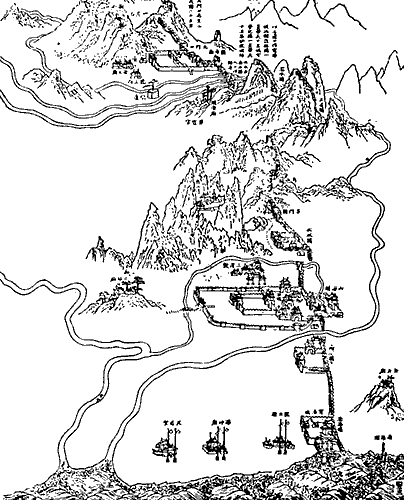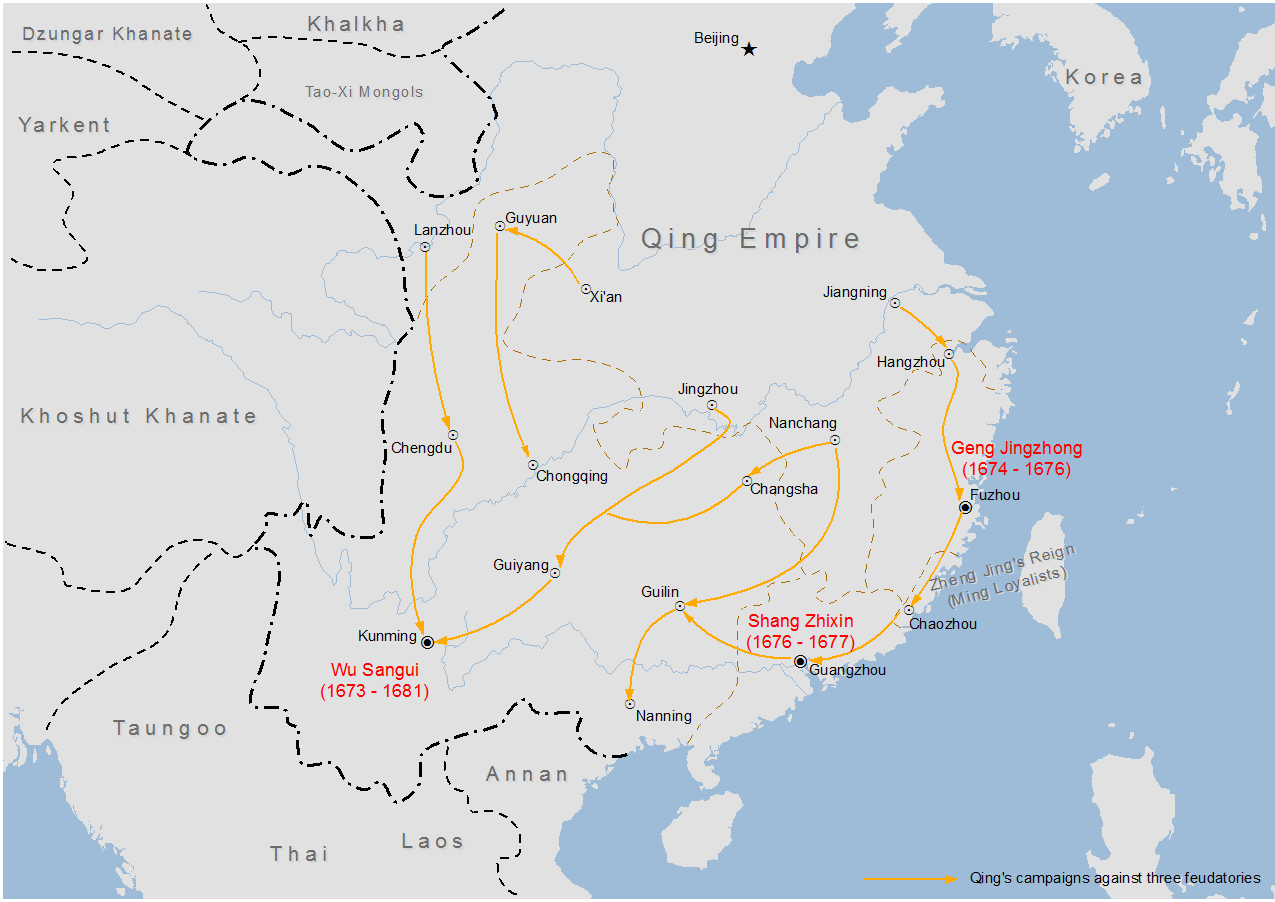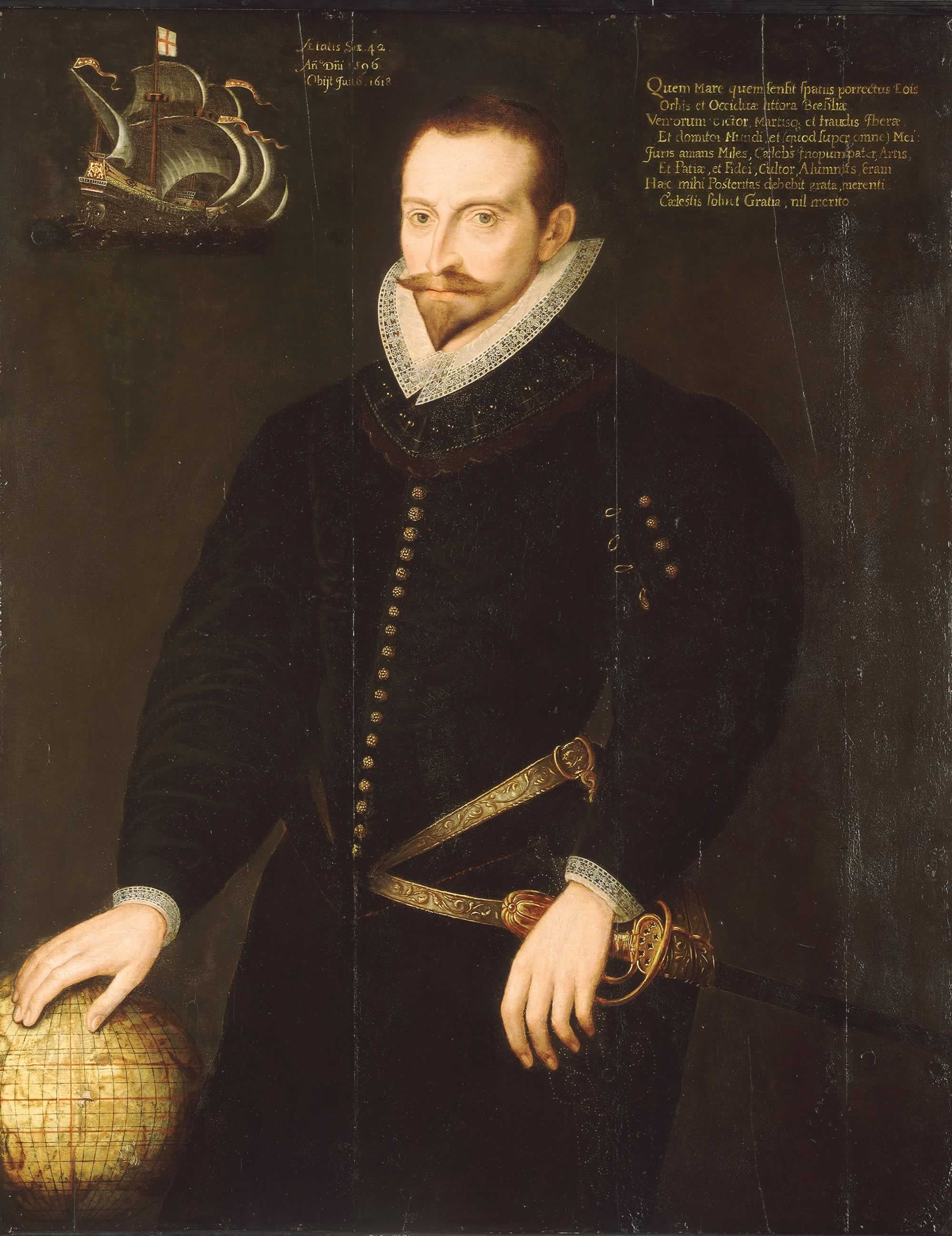|
Qing Conquest Of Ming
The transition from Ming to Qing, alternatively known as Ming–Qing transition or the Manchu conquest of China, from 1618 to 1683, saw the transition between two major dynasties in Chinese history. It was a decades-long conflict between the emerging Qing dynasty, the incumbent Ming dynasty, and several smaller factions (like the Shun dynasty and Xi dynasty). It ended with the consolidation of Qing rule, and the fall of the Ming and several other factions. Overview The transition from the Ming to Qing was a decades-long period of conflict between: # the Qing dynasty, established by the Manchu clan Aisin Gioro in contemporary Northeast China; # the Ming dynasty, the incumbent dynasty led by the Zhu clan; # and various other rebel powers in China, such as the short-lived Xi dynasty led by Zhang Xianzhong and the short-lived Shun dynasty led by Li Zicheng. Leading up to the Qing, in 1618, the Later Jin khan Nurhaci commissioned a document entitled the Seven Grievances, whic ... [...More Info...] [...Related Items...] OR: [Wikipedia] [Google] [Baidu] |
Battle Of Shanhai Pass
The Battle of Shanhai Pass, fought on May 27, 1644 at Shanhai Pass at the eastern end of the Great Wall, was a decisive battle leading to the beginning of the Qing dynasty rule in China proper. There, the Qing prince-regent Dorgon allied with former Ming general Wu Sangui to defeat rebel leader Li Zicheng of the Shun dynasty, allowing Dorgon and the Qing army to rapidly conquer Beijing. Prelude Rise of the Manchus As the Ming dynasty declined, and the threat from northern enemies grew, Ming emperors saw the strategic value of Shanhai Pass and frequently garrisoned troops there, armies which sometimes reached up to 40,000 men. Under the rule of Hong Taiji (r. 1626–1643), the Qing were becoming more aggressive against the Ming. After an intermittent siege that lasted over ten years, Qing armies led by Jirgalang captured Songshan and Jinzhou in early 1642. The garrison of Ming general Wu Sangui in Ningyuan became the only major army standing between the Qing forces ... [...More Info...] [...Related Items...] OR: [Wikipedia] [Google] [Baidu] |
Revolt Of The Three Feudatories
The Revolt of the Three Feudatories, () also known as the Rebellion of Wu Sangui, was a rebellion in China lasting from 1673 to 1681, during the early reign of the Kangxi Emperor (r. 1661–1722) of the Qing dynasty (1644–1912). The revolt was led by the three lords of the fiefdoms in Yunnan, Guangdong and Fujian provinces against the Qing central government. These hereditary titles had been given to prominent Han Chinese defectors who had helped the Manchu conquer China during the transition from Ming to Qing. The feudatories were supported by Zheng Jing's Kingdom of Tungning in Taiwan, which sent forces to invade Mainland China. Additionally, minor Han military figures, such as Wang Fuchen and the Chahar Mongols, also revolted against Qing rule. After the last remaining Han resistance had been put down, the former princely titles were abolished. Background In the early years of the Qing Dynasty, during the reign of the Shunzhi Emperor, central government authority was n ... [...More Info...] [...Related Items...] OR: [Wikipedia] [Google] [Baidu] |
English East India Company
The East India Company (EIC) was an English, and later British, joint-stock company founded in 1600 and dissolved in 1874. It was formed to trade in the Indian Ocean region, initially with the East Indies (the Indian subcontinent and Southeast Asia), and later with East Asia. The company seized control of large parts of the Indian subcontinent, colonised parts of Southeast Asia and Hong Kong. At its peak, the company was the largest corporation in the world. The EIC had its own armed forces in the form of the company's three Presidency armies, totalling about 260,000 soldiers, twice the size of the British army at the time. The operations of the company had a profound effect on the global balance of trade, almost single-handedly reversing the trend of eastward drain of Western bullion, seen since Roman times. Originally chartered as the "Governor and Company of Merchants of London Trading into the East-Indies", the company rose to account for half of the world's trad ... [...More Info...] [...Related Items...] OR: [Wikipedia] [Google] [Baidu] |
Kingdom Of Portugal
The Kingdom of Portugal ( la, Regnum Portugalliae, pt, Reino de Portugal) was a monarchy in the western Iberian Peninsula and the predecessor of the modern Portuguese Republic. Existing to various extents between 1139 and 1910, it was also known as the Kingdom of Portugal and the Algarves after 1415, and as the United Kingdom of Portugal, Brazil and the Algarves between 1815 and 1822. The name is also often applied to the Portuguese Empire, the realm's overseas colonies. The nucleus of the Portuguese state was the County of Portugal, established in the 9th century as part of the '' Reconquista'', by Vímara Peres, a vassal of the King of Asturias. The county became part of the Kingdom of León in 1097, and the Counts of Portugal established themselves as rulers of an independent kingdom in the 12th century, following the battle of São Mamede. The kingdom was ruled by the Alfonsine Dynasty until the 1383–85 Crisis, after which the monarchy passed to the House of Aviz ... [...More Info...] [...Related Items...] OR: [Wikipedia] [Google] [Baidu] |
Tokugawa Shogunate
The Tokugawa shogunate (, Japanese 徳川幕府 ''Tokugawa bakufu''), also known as the , was the military government of Japan Japan ( ja, 日本, or , and formally , ''Nihonkoku'') is an island country in East Asia. It is situated in the northwest Pacific Ocean, and is bordered on the west by the Sea of Japan, while extending from the Sea of Okhotsk in the no ... during the Edo period from 1603 to 1868.Louis-Frédéric, Nussbaum, Louis-Frédéric. (2005)"''Tokugawa-jidai''"in ''Japan Encyclopedia'', p. 978.Nussbaum"''Edo-jidai''"at p. 167. The Tokugawa shogunate was established by Tokugawa Ieyasu after victory at the Battle of Sekigahara, ending the civil wars of the Sengoku period following the collapse of the Ashikaga shogunate. Ieyasu became the ''shōgun,'' and the Tokugawa clan governed Japan from Edo Castle in the eastern city of Edo (Tokyo) along with the ''daimyō'' lords of the ''samurai'' class.Nussbaum"Tokugawa"at p. 976. The Tokugawa shogunate organized ... [...More Info...] [...Related Items...] OR: [Wikipedia] [Google] [Baidu] |
Turfan Khanate
Turpan (also known as Turfan or Tulufan, , ug, تۇرپان) is a prefecture-level city located in the east of the autonomous region of Xinjiang, China. It has an area of and a population of 632,000 (2015). Geonyms The original name of the city is unknown. The form Turfan (while it is older than Turpan), was not used until the middle of the 2nd millennium CE and its use became widespread only in the post-Mongol period. Historically, many settlements in the Tarim Basin have been given a number of different names. Some of these names have also referred to more than one place: Turpan/Turfan/Tulufan is one such example. Others include Jushi/Gushi, Gaochang/ Qocho/Karakhoja and Jiaohe/Yarkhoto. The center of the region has shifted a number of times, from Yar-Khoto (Jiaohe, to the west of modern Turpan) to Qocho (Gaochang, to the southeast of Turpan) and to Turpan itself. History Turpan has long been the centre of a fertile oasis (with water provided by the '' karez'' canal ... [...More Info...] [...Related Items...] OR: [Wikipedia] [Google] [Baidu] |
Kumul Khanate
The Kumul Khanate was a semi-autonomous feudal Turkic khanate (equivalent to a banner in Mongolia) within the Qing dynasty and then the Republic of China until it was abolished by Xinjiang governor Jin Shuren in 1930. The Khanate was located in present-day Hami prefecture of Xinjiang. History The Khans of Kumul were direct descendants of the Khans of the Chagatai Khanate, and thus the last descendant of the Mongol Empire. The Ming dynasty established a tributary relationship with the Turpan Khanate, that put end to Kara Del in 1513 after its conquest by Mansur Khan in the Ming–Turpan conflict. The Khanate paid tribute to the Ming. The Turpan Khanate under Sultan Said Baba Khan supported Chinese Muslim Ming loyalists during the 1646 Milayin rebellion against the Qing dynasty. Beginning in 1647, after the defeat of the Ming loyalists, during which the Kumul Prince Turumtay was killed at the hands of Qing forces, Kumul submitted to the Qing and sent tribute. It came under Q ... [...More Info...] [...Related Items...] OR: [Wikipedia] [Google] [Baidu] |
Yarkent Khanate
The Yarkent Khanate, also known as the Yarkand Khanate and the Kashghar Khanate, was a Sunni Muslim Turkic state ruled by the Mongol descendants of Chagatai Khan. It was founded by Sultan Said Khan in 1514 as a western offshoot of Moghulistan, itself an eastern offshoot of the Chagatai Khanate. It was eventually conquered by the Dzungar Khanate in 1705. Capital Yarkent served as the capital of the Yarkent Khanate, which was also known as the Yarkent State (''Mamlakati Yarkand''), from the establishment of the Khanate (1514 AD) to its fall (1705 AD). The previous Dughlat state of Mirza Abu Bakr Dughlat (1465–1514) of Kashgaria also used Yarkent as the capital of state. History Background The Khanate was predominantly Uyghur/ Turki; some of its most populated cities were Hotan, Yarkent, Kashgar, Yangihissar, Aksu, Uchturpan, Kucha, Karashar, Turpan and Kumul. It enjoyed continued dominance in the region for about 200 years until it was conquered by the Dzungar Khan, ... [...More Info...] [...Related Items...] OR: [Wikipedia] [Google] [Baidu] |
Northern Yuan Dynasty
The Northern Yuan () was a dynastic regime ruled by the Mongol Borjigin clan based in the Mongolian Plateau. It existed as a rump state after the collapse of the Yuan dynasty in 1368 and lasted until its conquest by the Jurchen-led Later Jin dynasty in 1635. The Northern Yuan dynasty began with the retreat of the Yuan imperial court led by Toghon Temür (Emperor Huizong of Yuan) to the Mongolian steppe. Although Yuan authority in most of China proper collapsed by 1368, Yuan loyalists in Yunnan led by Basalawarmi survived until their defeat by the Ming in 1382. This period featured factional struggles and the often only nominal role of the Great Khan. Dayan Khan and Mandukhai Khatun reunited the Mongol tribes in the 15th century. However, the former's distribution of his empire among his sons and relatives as fiefs caused the decentralization of the imperial rule. Despite this decentralization, a remarkable concord continued within the Dayan Khanid aristocracy, an ... [...More Info...] [...Related Items...] OR: [Wikipedia] [Google] [Baidu] |
Tiandihui
The Tiandihui, the Heaven and Earth Society, also called Hongmen (the Vast Family), is a Chinese fraternal organization and historically a secretive folk religious sect in the vein of the Ming loyalist White Lotus Sect, the Tiandihui's ancestral organization. As the Tiandihui spread through different counties and provinces, it branched off into many groups and became known by many names, including the ''Sanhehui''. The ''Hongmen'' grouping is today more or less synonymous with the whole ''Tiandihui'' concept, although the title "Hongmen" is also claimed by some criminal groups. Its current iteration is purely secular. Under British rule in Hong Kong, all Chinese secret societies were collectively seen as criminal threats and were bundled together and defined as "Triads", although the Hongmen might be said to have differed in its nature from others. The name of the "Three Harmonies Society" (the "Sanhehui" grouping of the Tiandihui) is in fact the source of the te ... [...More Info...] [...Related Items...] OR: [Wikipedia] [Google] [Baidu] |
Yehe
Nara (Manchu: , Wade-Giles: nara hala, Chinese: , or ) is a clan name shared by a number of royal Manchu clans. The four tribes of the Hūlun confederation () – Hada (), Ula (), Hoifa () and Yehe () – were all ruled by clans bearing this name. The head of each clan held the princely title of "beile" (; Manchu: "chief, lord, or Prince of the Third Rank"). During the Jin Dynasty, Nara was listed as one of the noble "white clans" (). ''Nara'' is the Mongolic word for 'sun'. In Mongolia, the sun is associated to Genghis Khan as the nara tamga is the main tamga attributed to him. History The Naras lived in the Haixi area, which encompasses parts of modern-day Jilin, Heilongjiang, Liaoning and Inner Mongolia. The Hada Naras and Ula Naras are native to Manchuria and shared an ancestor. The Yehe Naras were founded by a Tümed Mongol prince Singgen Darhan who conquered the local Nara tribe and assumed their name, establishing his rule over the banks of the Yehe river. The H ... [...More Info...] [...Related Items...] OR: [Wikipedia] [Google] [Baidu] |
Koxinga
Zheng Chenggong, Prince of Yanping (; 27 August 1624 – 23 June 1662), better known internationally as Koxinga (), was a Ming loyalist general who resisted the Qing conquest of China in the 17th century, fighting them on China's southeastern coast. In 1661, Koxinga defeated the Dutch outposts on Taiwan and established a dynasty, the House of Koxinga, which ruled part of the island as the Kingdom of Tungning from 1661 to 1683. Biography Early years Zheng Sen was born in 1624 in Hirado, Hizen Province, Japan, to Zheng Zhilong, a Chinese merchant and a Japanese woman, known only by her surname "Tagawa" or probably Tagawa Matsu. He was raised there until the age of seven with the Japanese name Fukumatsu (福松) and then moved to Fujian province of Ming dynasty China. In 1638, Zheng became a '' successful candidate'' in the imperial examination and became one of the twelve ''Linshansheng'' () of Nan'an. In 1641, Koxinga married the niece of Dong Yangxian, an offici ... [...More Info...] [...Related Items...] OR: [Wikipedia] [Google] [Baidu] |





